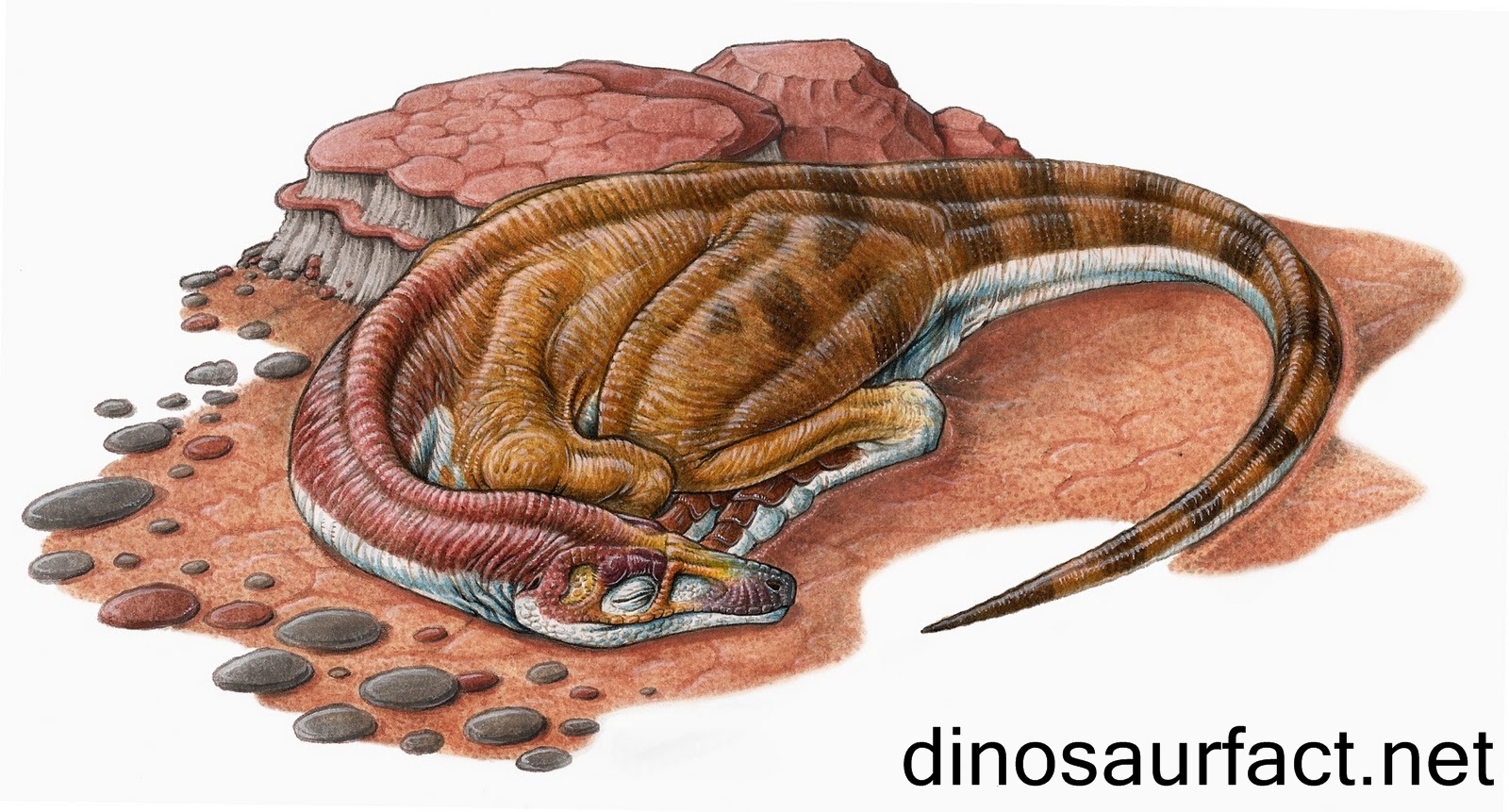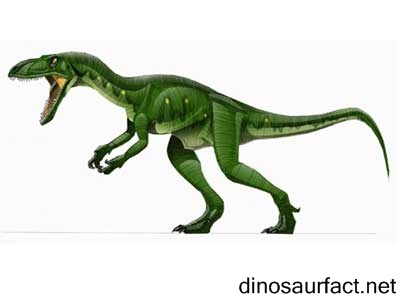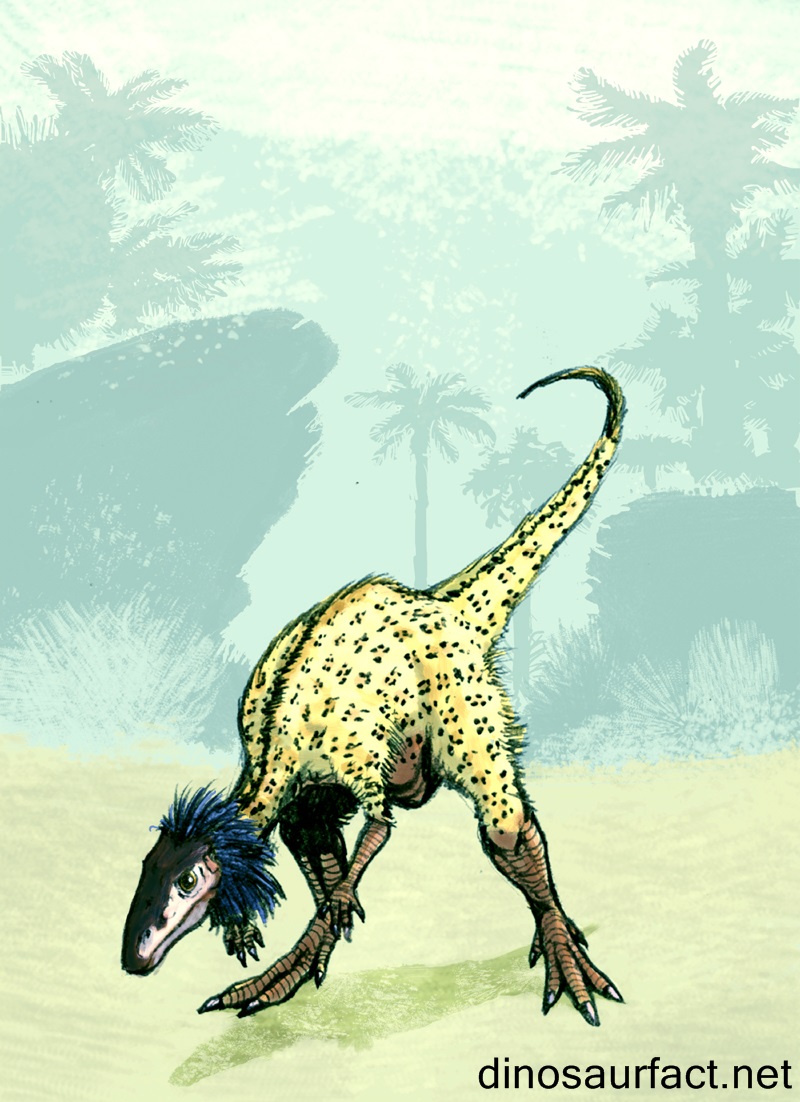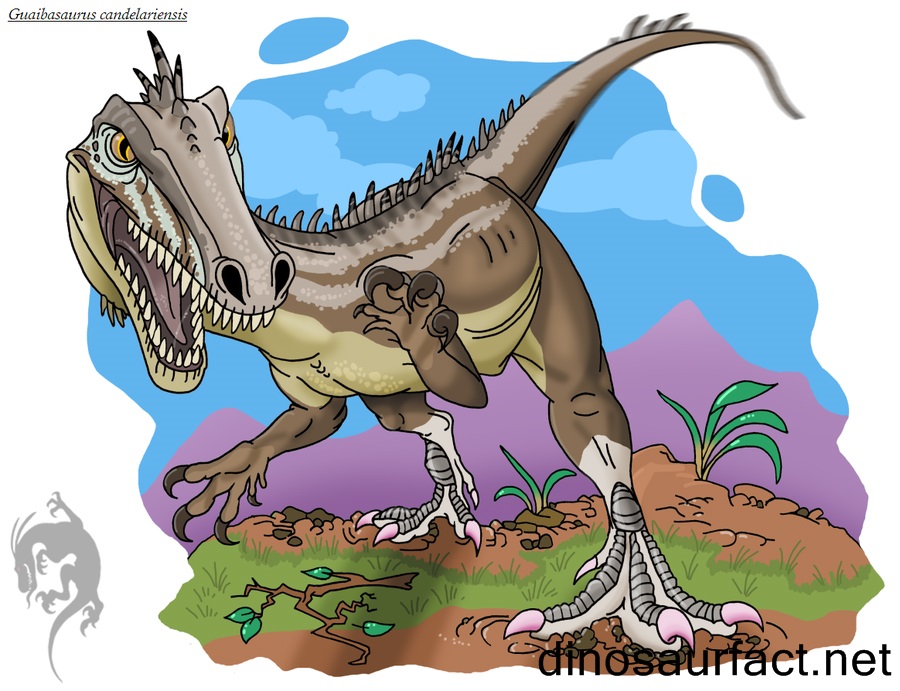 Click to visit the previous dinosaur bio
Click to visit the previous dinosaur bio
 |
|
 |
|
Kingdom: Animalia
Phylum: Chordata
Class: Sauropsida
Superorder: Dinosauria
Order: Saurischia
Suborder: Sauropodomorpha
Family: Guaibasauridae
Genus: Guaibasaurus
 |
|
 |
|
 |
|

The Guabisaurus, a native of southern Brazil, was a basal dinosaur that lived during the Late Triassic period. It lived approximately 216.5 to 212 million years ago in the woodlands of South America, primarily Brazil. The evolution of this dinosaur is key in analyzing early sauropodomorphs.
The discovery of Fossils
The Guabisaurus was named after identifying the holotype, MCN PV2355 and the paratype MCN PV2356. Both of these fossil remains were discovered in the 'Sesmaria do Pinhal 2'of the the Geopark of Paleorotta near Calendaria, Rio Grande do Sul, Brazil. The holotype MCN PV2355 contains the remains of a partial postcranial skeleton while the Paratype comprises an almost complete left hindlimb.
Two additional specimens were found later in the same Geopark in a different location: The 'Linha Sao Luiz' locality near Faxinal Do Soturno, UFRGS. These include the PV0725T, another almost complete postcranial skeleton without a forelimb, legs and the neck and the MCN PV 10112 is still being prepared - it contains a partial hand.
The Guabisaurus was named in 1999 by Jorge Ferigolo, Ana Maria Riberio and Jose Bonaparte. The type species is Guabisaurus candelariensis, after the 'Rio Guabi Hydrographic basin' where the fossils were found and the nearby city Candelaria.
The Paleorotta GeoPark and the discoverers
The Paleorotta Geopark is located in central Rio Grande de Sul, Brazil. The fossils found in the Paleorotta Geopark belong to the Triassic period (early, middle and late) along with some from the Late Permian period. It is home to a number of paleontological excavation sites that have produced a very diverse assemblage of ancient vertebrates. Over around sixty different species of prehistoric vertebrates have been found in the Geopark.
The first fossil discovery dates back to as early as 1901. Antiro De Almeida found the first fossils in the Santa Maria province. In the southwestern sector of the Paleorotta were found fossils as old as 270 million years ago. These fossils belonged to the Permian age, which is the segment before the Triassic. At the end of the Permian and at the beginning of the Triassic, 95% of the species that existed in the Permian age suffered extinction. This phenomenon is known as the Permian-Triassic extinction. Due to this, interest in the Paleorotta Geopark has increased significantly.
Jose Bonaparte (PhD), an Argentine paleontologist (not to be confused with Napoleon's elder brother) was born on the 14th of June, 1928. He has discovered and named a vast number of South American dinosaurs, some of which include Carnotaurus, Mussaurus patagonicus, Velocisaurus unicus and Coloradisaurus brevis. He is claimed to be singlehandedly responsible for bringing Argentina ahead in the world of Paleontology.
Physical Characteristics and Anatomy
The specimen UFRGS PV0725T depicts the vertebrae of the neck showcasing a curve to the left. The hind limbs are below the body and the upper limbs to the side. This means that the creature was resting in a position with its neck turned left. This posture is similar to the resting position of modern birds. This suggests that conservation of body heat was the reason the Guabisaurus rested in this position.
The size and weight of the Guabisaurus are not known. It was a bipedal i.e. it could walk on two legs. The Guabisaurus dinosaur had 5 digits on each hand. Out of these, three were fully developed fingers while the remaining two were vestigial. Very rare physical characteristics are known for this dinosaur. It had a slender and more gracile body.
About the Guabisaurus
The Guabisaurus is one of the earliest dinosaurs of the Late Traissic Period. It preceded the time of the divergence between Orthinicshian and Saurischian species and thus presents a lot of challenge in the area of classification.
The Guabisaurus, according to the report Bonaparte and his colleagues published in 1999 is a Basal theropod. They classified it under its own family of Guabisauridae, in which another member Saturnalia was added in 2007. Both the dinosaurs were similar and the group depicted primitive Saurischian characteristics. It was deduced that both of these dinosaurs resembled theropods more than sauropods.
Recent Cladistic Analysis has established that all members of the Guabisauridae are basal Sauropodomorphs with the exception of the Guabisaurus itself which is either a basal theropod or a basal sauropodomorph. The Guabisaurus is proof of the fact that theropods and sauropodomorphs did, in fact, have a common ancestor. This is evident since the Guabisaurus carries both set of characteristics.
Owing to this it cannot be deduced whether this dinosaur was a carnivore or an herbivore. Scientists' best bet is that the Guabisaurus was an omnivore, feeding off both vegetation and other creatures. For now the Guabisaurus is classified under the family of Sauropodomorphs, until fossil data suggests otherwise.
The Guabisaurus is certainly an interesting species and a comparative study can help bridge the gap between the two families of dinosaurs. Also, the divergence of birds and reptiles can be studied by studying this dinosaur. More complete fossils are needed to study this species of dinosaur further.
Also more information about the Permian age can be determined by excavations at the Santa Maria and other such sites of the Paleorotta Geopark. This will help answer the questions about the Permian-Triassic extinction and also provide information about the Permian age. This is the need of the hour as Permian age data is rare and obscure. Excavations at the sites will hopefully produce more fossils that will enable us to know more about it.
Thus, more analysis and excavations are crucial to the study of dinosaurs. The ancient creatures are a big mystery to mankind and solving this mystery can help us understand the history of the earth better. As far as the Guabisaurus is concerned, unless more complete fossils are found, there is no uplifting the veil off this creature's identity. Only with more accurate testing and concrete evidence can we claim with confidence which family this dinosaur belongs to.
Index
Extinct Profiles
 Triassic Dinosaurs
Triassic Dinosaurs Jurassic Dinosaurs
Jurassic Dinosaurs Cretaceous Dinosaurs
Cretaceous Dinosaurs Pterosaurs
Pterosaurs Marine Reptiles
Marine Reptiles Dinosaur Extinction
Dinosaur Extinction